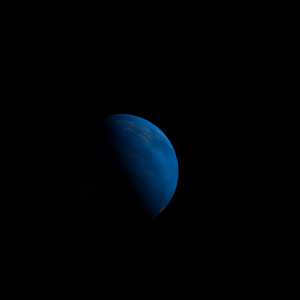|
|
Space Astro
|
Info for exoplanet "Hisubyu Mo"
| Scientific (actual) data |
|---|
| Name | Kepler-1593 b |
| Planet status | Confirmed |
| Radius | 0.283 |
| Orbital period | 174.51 |
| Discovered | 2016 |
| Updated | 2021-02-05 |
| Tconj | 2455030 |
| Publication | Announced on a website |
| Detection type | Primary Transit |
| Alternate names | 2MASS J20015716+4427384 b, K04356.01, KIC 8459663 b, KOI-4356 b, KOI-4356.01 |
| Star name | Kepler-1593 |
| Right ascension | 300.49° |
| Declination | 44.46° |
| Mag j | 14.188 |
| Mag h | 13.675 |
| Mag k | 13.452 |
| Star distance | 755 |
| Star metallicity | 0.02 |
| Star mass | 0.81 |
| Star radius | 0.77 |
| Star age | 3.63 |
| Star temperature | 4995 |
| Star alternate names | 2MASS J20015716+4427384, KIC 8459663, KOI-4356 |
| Wikipedia article | Kepler-1593 b |
Back
| |
| Fictional info (?) |
|---|
| Suggested name | Hisubyu Mo |
| Planet type | Cold planet |
| It is radically different from Earth in other respects.
A prominent result is the "great red spot", a giant storm that is known to have existed for centuries since it was first detected by scanner. |
| Atmosphere | Carbon dioxide | 85% |
| Xenon | 15% |
| Hydrogen deuteride (HD) | 0.00032% |
| Atmospheric pressure | 90 bar |
 |
| Moon | Pyakya Oyoa'zu | Large slightly egg-shaped ice comet |
| Nyogu-mipu | Large irregular rocky moon |
| Byusu | Large almost round crater-filled moon |
| Puriso Daago | Medium-sized potato shaped oceanic asteroid |
| Shoryo Jijochi | Small slightly egg-shaped rocky moon |
| Buukyu-izuju | Large almost round gaseous comet |
| Kukibya | Large round rocky moon |
| Giraji | Small slightly egg-shaped crater-filled asteroid |
| Surehyo Byau | Huge potato shaped rocky planetoid |
| Tahya | Medium-sized round ice asteroid |
| Peyachi-cho | Medium-sized round gaseous planetoid |
| Ryuchu | Large slightly egg-shaped ice asteroid |
| Pipya Byu | Huge round oceanic moon |
| Kagonyu-bya | Large almost round ice comet |
| Bohefu Yo | Huge potato shaped rocky moon |
| Mabyoke'nyuji | Small potato shaped crater-filled asteroid |
| Paju Womyo To | Medium-sized slightly egg-shaped ice moon |
| Bemirumya-nogyu | Medium-sized almost round rocky comet |
| Ishiazu Ke | Large potato shaped rocky asteroid |
| Kyoru Mehya-gi | Very small almost round gaseous comet |
| Dotope | Large round crater-filled asteroid |
| Makepo-ba | Medium-sized almost round ice comet |
| Byofu'shotsu | Medium-sized irregular gaseous asteroid |
| Google search for Hisubyu mo |
|
Website by Joachim Michaelis
|
|
|
|